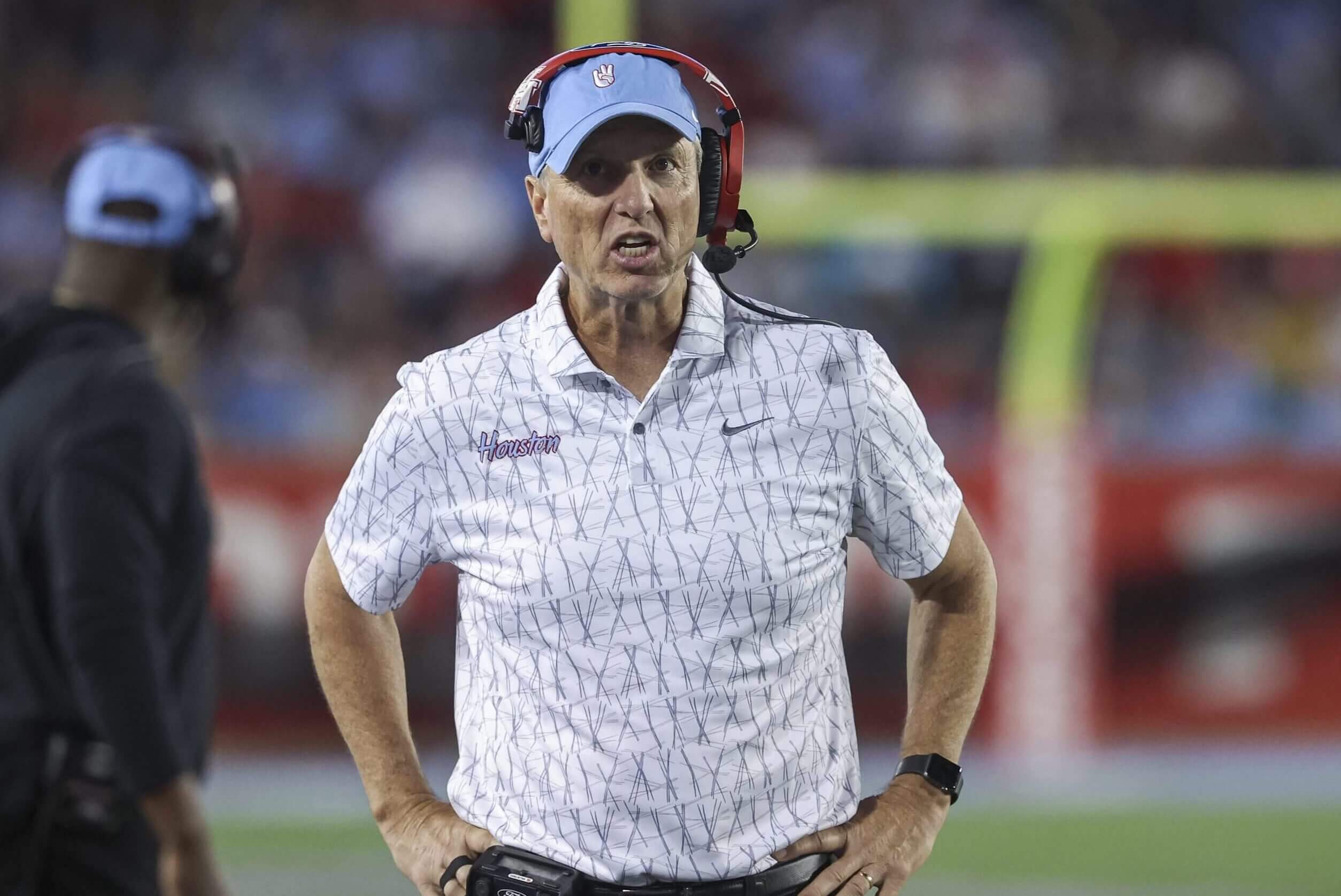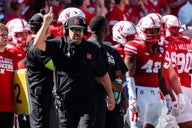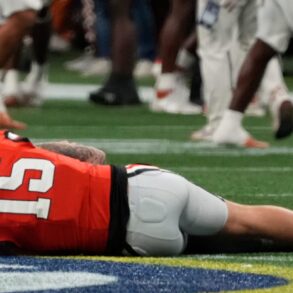Are college football spring games about to become a thing of the past? Nebraska coach Matt Rhule’s concerns about players being poached and Texas’ and USC’s decisions recently to cancel their spring games for different reasons have sparked discussion about the value of spring games and what role spring practice still has.
Advertisement
The elongated season with an expanded College Football Playoff and spring player movement during the April transfer portal window have spurred some programs to reimagine spring football and some to question whether bigger changes are needed.
We asked coaches and personnel staffers around the country for their thoughts on spring games, spring practice and what it all could look like.
Do players really get poached from spring games?
It depends. This month, Rhule said that after Nebraska’s spring game last year, some of his players were tampered with by other programs.
“So to go out and bring in a bunch of new players and then showcase them for all the other schools to watch, that doesn’t make a lot of sense to me,” Rhule said Feb. 1. “The word ‘tampering’ doesn’t exist anymore, it’s just absolute free, open, common market. And so, I don’t necessarily want to open up (the spring game) to the outside world. I don’t want these guys all being able to watch our guys and say, ‘Wow, he looks like a pretty good player. Let’s go get him.’”

Willie Fritz is entering his second season as Houston’s coach. (Troy Taormina / Imagn Images)
A former Power 4 scouting director, granted anonymity in exchange for his candor, said he understood Rhule’s perspective.
“As someone who sat in staff meetings in April and May and hearing about two of our freshmen that had been on the campus for four months who were getting calls from other schools because of how they were doing in spring ball and the spring game, yeah, I totally get where coaches are coming from,” the scouting director said.
He said his team’s video staff downloaded television copies of spring games that were publicly broadcast last year so the scouting staff could splice them and evaluate players, just as they would with traditional game film.
“It was more like, ‘This guy said he would go in (the portal),’ or ‘This guy would go in if we were interested, let’s cut up his spring game,’” he said.
Advertisement
Others called the concerns “overblown” given the timing of the spring portal window, which is on the heels of — or in some cases before — some spring games. This year, the spring portal window opens April 16 and closes April 25.
“At that point, it’s too late,” a Power 4 general manager said. “We’re not going to wait until the portal is happening in late April to go find someone. ‘Oh, this D-end popped off.’”
A Power 4 recruiting coordinator said, “I’m not turning on ESPN to watch Nebraska’s spring game. That’s not going to do anything for me. When guys go in the portal, we go and watch the film from the fall. We’re not watching spring practice tape. That’s not what we’re making our final evaluation on.”
Even without televised spring games, tampering persists. Tulane coach Jon Sumrall told The Athletic this week that some of his players have told him this semester they’ve already been contacted by other programs about potentially getting in the portal and some players who have left in the past already knew where they were going when they informed Sumrall they were leaving, even though they weren’t officially in the portal at the time.
“If they’re gonna leave, they’re gonna leave anyways,” Sumrall said. “So I don’t waste a lot of time or energy thinking about (who’s watching our spring game).”
A Group of 5 general manager said that not hosting or broadcasting a spring game might be a deterrent, but it doesn’t solve the issue.
“The way they do it at the Power 4 level, they’re going to know about your guys anyway, whether you have the spring game televised or not,” he said.

GO DEEPER
Matt Rhule addresses Nebraska’s spring game, special teams, revenue sharing
What other factors are spurring changes in spring practice or spring games?
When Texas coach Steve Sarkisian said last week on the “Up & Adams Show” that the Longhorns will not host a traditional spring game this year, he mentioned nothing about tampering. Instead, he highlighted the wear and tear on his players after a 16-game season.
“Over the last two years, we’ve played 30 games,” he said. “That’s a lot for college football.”
Advertisement
Because of the expanded Playoff, the season ended later than it ever has: Notre Dame and Ohio State played for the national championship Jan. 20. Ohio State coach Ryan Day told his school’s board of trustees that the Buckeyes must be “smart” about their spring plans because “to think that we can continue with the same spring game or spring practice model is asking for trouble.”
Sarkisian referenced using the first half of Texas’ spring practice as “more of an OTA-style,” alluding to the NFL’s organized team activities, offseason workouts that are conducted without pads or live contact usually at a walkthrough pace, with a focus on drills and individual skill work. Then, the second half of Texas’ spring will include more traditional scrimmage formats, he said.
“I just don’t know if rolling the ball out and playing a game, when we only get 15 practices, is the best for us to maximize the opportunities that we get,” he said.
The spring portal window has prompted discussion about the timing of spring practice since rosters can change significantly. Some coaches would prefer to maximize practice time with their entire team, rather than a portion of it.
“You’re sitting there watching these guys go through spring ball, wondering which of those players are going to be here in the fall,” TCU coach Sonny Dykes said. “All of a sudden, a player has a good spring game, and now that’s a bargaining tool for, ‘I want this or I want that or I need to go in the portal.’”
Dykes said changing the timing of when offseason practices occur would be logical if players can still transfer in the spring.
“If you’re going to expand the College Football Playoff, if you’re going to keep the (spring) transfer portal, then I think spring football probably doesn’t make a whole lot of sense,” Dykes said. “Maybe the first three weeks of June now start to make sense, where you have OTAs for those three weeks and you get 15 opportunities. … The way it’s set up right now is really pretty silly.”
Advertisement
Sumrall suggested splitting up the 15 practices across spring and summer. Currently, NCAA bylaws dictate those 15 practices be conducted within a consecutive 34-day period.
“If they said, ‘Hey, you get 15 days, use ’em when you want,’ I’d probably use six or seven or eight in the spring and six or seven in the summer,” he said. “I could split ’em into two segments.”
Roster depth and injuries have long played into the viability of spring games. Because players have graduated and transferred out and not all newcomers have arrived, it can lead to shortages at certain positions, particularly on the line of scrimmage, making conducting a game that much tougher.
What value do spring practice and a spring game have in 2025?
Count Houston coach Willie Fritz among those who still believe in the value of spring practice. In 2024, his first year with the Cougars, he used it to focus on fundamentals and teaching players and his staff how he wanted things done. This year, it’s about integrating 29 new scholarship players into the team.
“It allows you to see what you’ve got, what guys can do, what they can’t do,” Fritz said. “You get into technique and fundamentals. You get to work with everybody. … If you’ve got 100 guys out there, maybe the 100th guy gets almost as many reps as the first guy.”
Sumrall estimated his team will return only two offensive starters and four on defense. So for Tulane, spring practice is imperative.
“I don’t have the luxury of going out and buying everybody else’s players because my NIL situation doesn’t allow that,” he said. “So I’ve got to develop dudes.”
The spring game itself is a key opportunity for the program to connect with its fans, with many of them offering free admission — important for fans who can’t spring for expensive fall home games. Schools often build the day around a spring game, offering family-friendly activities, chances to interact with the team or hosting spring sports home games on campus before or afterward. Sumrall said Tulane has a crawfish boil, and it invites players’ families to attend.
Advertisement
One size might not fit all. For programs whose seasons end in November or December, the traditional spring practice might still work. For teams playing in the national championship, a different approach might be required.
Regardless of what the spring game looks like in the future, the need for the practice remains, Sumrall said.
“Let it be known that football practice is good for having a good football team,” he said. “Whether you give it to me in the spring or post-second transfer portal window, I’ll adapt, I’ll evolve. Don’t take all of my practices away.
“This is a developmental game. We need to practice football, whether you tell me I can do it in March, April, June, whatever, we’ll figure it out.”
(Top photo of Matt Rhule: Dustin Satloff / Getty Images)
This post was originally published on this site be sure to check out more of their content.








